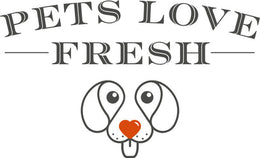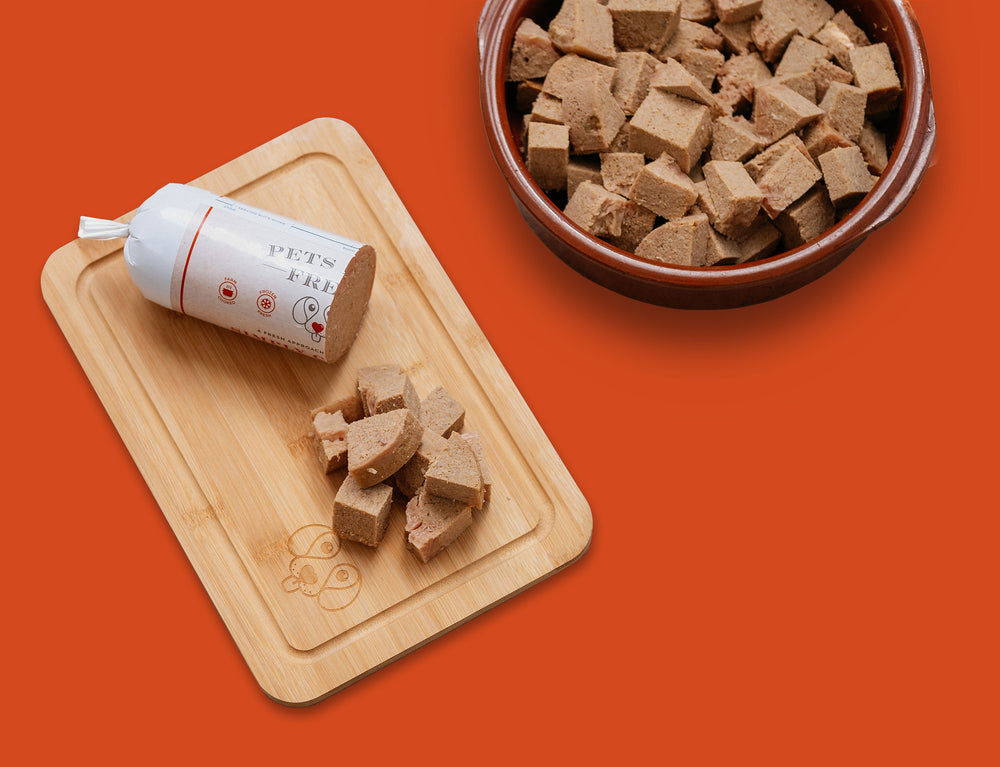Feeding Puppies: How Much and How Often?
We like to think of puppies as furry little toddlers with a fussy appetite. They’re always on the move and seem to need constant feeding - their small barks will be a continuous reminder of that.
But what should you feed them, exactly? And which puppy food is best, and how can you know whether you’re providing them with the appropriate amount?
These are all important questions that every new puppy owner needs to know the answers to. So we’ve created a guide for you to learn how to properly feed your puppy.
How Much Food Should You Feed A Puppy?
First things first, your adorable new family member is a carnivore, which means they need meat to grow.
Puppies’ rapid growth necessitates a high food intake, especially given that the first five months of your dog’s life are when they grow the quickest.
It’s important to remember that a puppy's stomach is not as developed as an adult's, so they need a smaller amount of food than an adult dog. A puppy's diet should be gradually increased over a few days to weeks as they become more active and their stomachs become more capable of digesting food.
To make things simpler, the most important factors to consider for your puppy's diet and how much they are eating are:
Size
Simple puppy science says that a small puppy will need less food than a large one. Chihuahua puppies can be born weighing only 85g, while a one-month-old Bulldog puppy weighs 3,000g on average! As you can guess, the Bulldog may need slightly more food to stay at a healthy weight.
Age
When puppies are four weeks old, they should begin eating solid food because their mother's milk isn't providing them with the calories they require. Puppies are typically weaned at six weeks old.
Our Puppy Food can be fed to puppies aged eight weeks and older, up to six months old.
Puppies between eight and twelve weeks old should be eating at the upper end of the weight brackets in the Pets Love Fresh feeding guide:

It’s common to feed puppies around this age one-and-a-half to two cups of kibble per day. However, we recommend avoiding kibble - it may be convenient and cheap, but it can often be the equivalent of junk food for dogs. The big labels on dog food brands often say their food offers complete nutrition, which seems great. However, this only means their products hit the bare minimum nutritional values your puppy needs to be happy and healthy.
Activity level
A puppy's diet should also be adjusted according to its activity level. It’s simple puppy science again: active puppies will need more food than inactive ones.
Oh, And Of Course: Your Dog’s Breed
Always consider your puppy’s breed - every dog is different, with some being predisposed to certain conditions, such as pancreatitis (see our article on what causes pancreatitis in dogs for more info). Some breeds have special nutritional requirements that should be considered whenever you adjust their diet.
We often hear one question: “when should I start switching my puppy to adult dog food?” There’s no exact science to this, but a rough rule of thumb to know when you can begin to switch your puppy over is when they reach 80% of their average adult size. See https://www.petmd.com/blogs/nutritionnuggets/dr-coates/2016/january/whats-difference-between-adult-dog-food-and-puppy-food for more info.
This varies depending on the breed:
- Tiny dogs - start switching around 9 or 10 months
- Medium dogs - about 12 months
- Large dogs - about 12 to 16 months
How Often To Feed A Puppy
From the moment they are weaned until they are four to six months old, puppies should ideally be fed a small amount of food two or three times a day. Their main meal should be in the morning or afternoon. Depending on their activity levels, super energetic puppies may need four meals a day instead. In general, twice-daily meals are fine after six months.
Setting a routine of feeding them more in the morning and at night is an excellent way to introduce your puppy to a new diet. However, each puppy has its personality quirks and unique tastes, so some will naturally eat less at certain times, particularly at night. Don’t worry if they don’t seem hungry at that time - make sure they’re making up for it another time.
Feeding puppies on a regular schedule will help you keep track of their eating habits and ensure they get the right amount of nutrition.
How Many Treats Per Day For A Puppy
It's common practice to give dogs treats as a reward for good behaviour, but these should be minimal. A treat isn’t a treat if it’s given all the time.
A full and balanced diet is essential for pups since they require a wide range of nutrients for growth. Puppy treats, which often do not provide adequate nutrition, should not be the primary source of calories for a puppy. Aim for treats to make up no more than 5% of their daily calorie intake.
We’ve got some nutritious treats that won’t break the bark - our Chicken Jerky
Dogs need a high protein content and an abundance of Omega 3 and 6 fatty acids, which is why we’ve made sure these additive-free treats are packed full of them. Say hello to shinier teeth and coats - along with improved cardiovascular health.
Puppy treats can also include fresh vegetables and fruits. They can help provide them with the vitamins and minerals they need, as well as fibre, which can help regulate their digestive system. Feeding your puppy fruits and veggies at regular intervals will help keep them healthy and happy.
Don’t forget the basics: Puppies need plenty of water and exercise to stay hydrated and healthy. Ensure they have access to a fresh water bowl at all times - chasing their tails is thirsty work.
Complete Natural Nutrition for Puppies
If you want to feed your puppy a well-balanced, highly nutritious diet, try one of our Pets Love Fresh taster packs. Our fresh puppy food is made with high levels of 70% human-grade chicken, organic brown rice, vitamins and minerals, and added prebiotics to promote healthy digestion.
Click here to order your Pets Love Fresh puppy taster pack.


